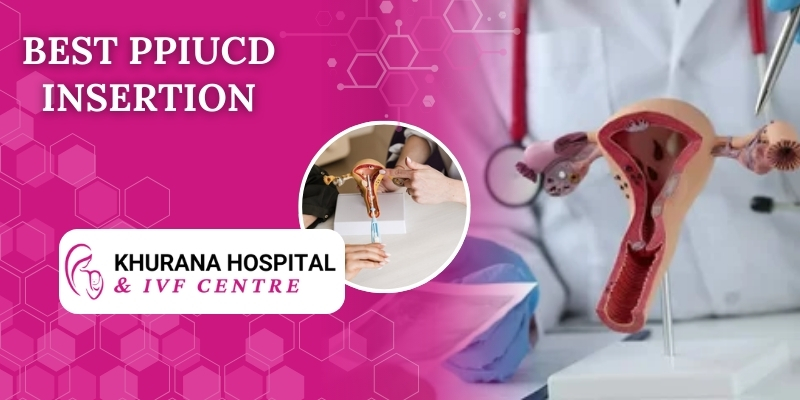PPIUCD Insertion
- Home
- Obstetrics
- PPIUCD Insertion

At Khurana Hospital and IVF Centre, we offer Postpartum Intrauterine Contraceptive Device (PPIUCD) insertion as an effective and long-lasting solution for family planning. This method allows you to take control of your reproductive health immediately after childbirth, ensuring you have the time and peace of mind to focus on your newborn without worrying about unplanned pregnancies.
What is PPIUCD?
The Postpartum Intrauterine Contraceptive Device (PPIUCD) is a small, T-shaped plastic and copper device that is inserted into the uterus right after delivery (either after vaginal birth or cesarean section). It works by preventing fertilization and implantation, offering you long-term protection from pregnancy.
PPIUCD is a highly effective and safe contraceptive method, ideal for women who wish to avoid pregnancy soon after childbirth. It provides a reliable solution for family planning without interfering with breastfeeding or overall health.
How Does PPIUCD Work?
The PPIUCD works through the following mechanisms:
- Prevents Fertilization: The copper released by the device alters the environment of the uterus, making it hostile to sperm, thus preventing fertilization.
- Prevents Implantation: In case fertilization occurs, the PPIUCD prevents the fertilized egg from implanting in the uterus, effectively preventing pregnancy.
It’s a non-hormonal method, so it doesn’t interfere with your natural hormone levels or breastfeeding.
Benefits of PPIUCD Insertion
- Immediate Contraceptive Protection: PPIUCD can be inserted immediately after childbirth, ensuring there’s no gap between the delivery and effective contraception.
- Long-lasting: Once inserted, the device provides protection against pregnancy for up to 10 years, making it a convenient, low-maintenance option.
- Non-Hormonal: PPIUCD is a non-hormonal form of contraception, making it an ideal choice for women who prefer not to use hormonal methods such as birth control pills or injections.
- Safe for Breastfeeding: It does not interfere with milk production, so you can continue breastfeeding without any concerns.
- Reversible: If you decide to have more children, the device can be removed at any time, and fertility typically returns quickly.
- Cost-effective: With long-term use, the PPIUCD is a cost-effective family planning option as it requires minimal follow-up after insertion.
Who is Eligible for PPIUCD Insertion?
PPIUCD insertion is suitable for most women, especially those who:
- Have recently delivered and wish to avoid pregnancy immediately after childbirth.
- Are looking for a long-term, low-maintenance family planning option.
- Do not want to use hormonal contraception due to personal preferences or medical reasons.
- Are looking for a breastfeeding-friendly contraceptive method.
In some cases, PPIUCD may not be recommended if you have certain medical conditions or complications, such as active pelvic infections, or if you’ve had previous difficulties with IUDs. Our expert doctors will assess your health history and guide you on the best options available.
Procedure of PPIUCD Insertion
The PPIUCD insertion procedure is quick, safe, and generally well-tolerated:
- Timing: The device is usually inserted within 10 minutes after delivery—either after vaginal birth or a cesarean section.
- Procedure: The insertion is done through the cervix into the uterus. It is a relatively painless procedure, though you may feel some discomfort during the insertion process.
- Aftercare: Once the device is in place, you will be monitored for a short period to ensure no complications arise. Most women can resume normal activities within a day or two.
The procedure is done in a sterile environment by trained medical professionals to ensure safety and minimize any risks.
Possible Side Effects of PPIUCD
PPIUCD is a safe and effective method of contraception, but, like any medical procedure, it may have potential side effects, which can include:
- Irregular Bleeding: Some women may experience irregular spotting or heavier menstrual periods in the first few months after insertion.
- Cramping: Mild cramping may occur, particularly in the first few days after insertion.
- Discomfort: Some women may feel slight discomfort or pressure during the insertion procedure, although this usually resolves quickly.
These side effects are generally temporary. If you experience any severe pain, heavy bleeding, or other concerns, it’s important to consult your doctor promptly.
